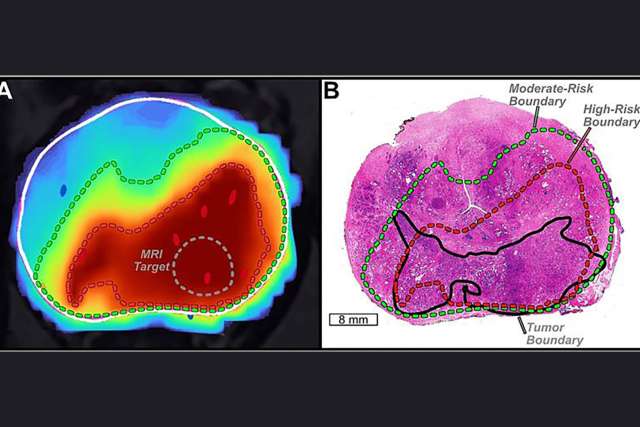Within a woman’s pelvis are the many organs that make up the reproductive system, including the ovaries, fallopian tubes, uterus and vagina. Gynecologic cancer — the uncontrolled growth and spread of abnormal cells — can develop in any one of the reproductive organs.
Early detection saves lives
All women are at risk for gynecologic cancer and risk rises with age. Prevention strategies can decrease your risk for some cancers. When prevention isn’t possible, early detection is key because treatment is more effective when the cancer is less advanced. Pay attention to your body and report anything abnormal to your provider.
Since each type of gynecological cancer has unique signs and symptoms, knowing them can be lifesaving. There are some things you can do to reduce your risk for all types of gynecological cancers including:
- Don’t smoke (poisons in tobacco and cigarette smoke decrease your body’s ability to fight cancer)
- Use a barrier method (like a condom) when having sex
- Limit the number of sexual partners you have
Types of gynecological cancer
There are seven types of gynecologic cancer; each is named for where the cancer cells originate. Here’s what you need to know about each type:
Cervical Cancer
The cervix is where the uterus ends and the vagina begins. Cancerous cells that begin here lead to cervical cancer.
Prevention
These screening tests may help prevent or detect cervical cancer:
- Pap smear screenings: Start having Pap tests at age 21. The test looks at the cells on your cervix to see if there are any precancerous changes.
- HPV test: The human papillomavirus (HPV) can cause cell changes that lead to cervical cancer.
The HPV vaccine helps protect against cervical cancer, as well as vaginal and vulvar cancers. It is recommended that girls and boys aged 11 to 12 should get the vaccine, given in a two- or three-shot series, but vaccination can be started as early as age 9. Vaccination is also recommended through age 26, but it can be given up to age 45 if agreed to by the physician and the patient.
Even if you or your child has the vaccine, he or she still needs regular screenings.
Symptoms
Prevention and early detection of cervical cancer through regular screenings is key since the disease doesn’t have symptoms in early stages. When symptoms do occur, it usually means the cancer has advanced. Symptoms include abnormal bleeding or discharge from the vagina.
Ovarian cancer
Ovarian cancer is the deadliest of the gynecological cancers. It is caused when cells in the ovaries or fallopian tubes grow out of control. Those cells may also spread to the peritoneum, (the tissue that lines the organs in the abdomen). When this happens, you may develop peritoneal cancer.
Prevention
There is no screening test available for ovarian cancer. If you experience symptoms, you should talk with your provider, who may order tests to help rule out cancer.
If you have a close family member — a mother, sister, grandmother or aunt — who has had ovarian cancer, it’s essential to inform your provider. You may be eligible for genetic testing to determine if you have a genetic abnormality associated with ovarian cancer.
Symptoms
It is important to recognize any warning signs of ovarian cancer and report them to your provider. Symptoms could include:
- Abnormal vaginal bleeding or discharge
- A feeling of fullness or difficulty eating, a bloated feeling
- Pelvic pain or pressure
- Increased frequency or urgency for urination
- Constipation
- Belly or back pain
Uterine cancer
Uterine cancer is sometimes called endometrial cancer. The endometrium is the lining of your uterus and most uterine cancers form from these cells. Related to uterine cancer is gestational trophoblastic disease (GTD). This is a rare cancer where cells that normally develop into the placenta during pregnancy grow out of control and become cancerous tumors.
Prevention
As with ovarian cancer, there is no screening test available for uterine cancer. You may be able to reduce your risk by:
- Using birth control pills containing estrogen and progesterone
- Being physically active and staying at a healthy weight
Symptoms
There are just two warning signs for uterine cancer. Talk with your doctor if you experience:
- Abnormal vaginal bleeding or discharge
- Pelvic pain or pressure
Vaginal cancer
The vagina is the birth canal. When cancerous cells originate here, it is called vaginal cancer. Vaginal cancer is rare — only 1 of every 1,100 women will develop this type of cancer in her lifetime.
Prevention
Screening tests aren’t available. Instead, consider what is normal for your body. Alert your provider to any abnormalities and seek regular checkups that include a pelvic examination. Being vaccinated for HPV may also reduce your risk.
Symptoms
It is important to recognize any warning signs and report them to your provider. Symptoms could include:
- Abnormal vaginal bleeding or discharge
- Increased frequency or urgency for urination or constipation
Vulvar cancer
The vulva is the outer part of the female genital organs — this region has two folds of skin called the labia. When cancer develops, it typically originates from the cells on the inner edges of the labia. This cancer is rare — just 1 woman in 333 will develop it.
Prevention
The same prevention approach for vaginal cancer applies to vulvar cancer since there aren’t screening tests available. The HPV vaccine may reduce your risk for vulvar cancer.
Symptoms
If you experience any of these warning signs, have a conversation with your provider.
- Itching, burning or tenderness of the vulva
- Vulvar changes such as a color change or developing a rash, sores or bumps
UCLA Obstetrics and Gynecology focus on preventing and diagnosing gynecological cancers. To schedule a yearly pelvic exam, patients can request an appointment online or call 310-794-7274.



